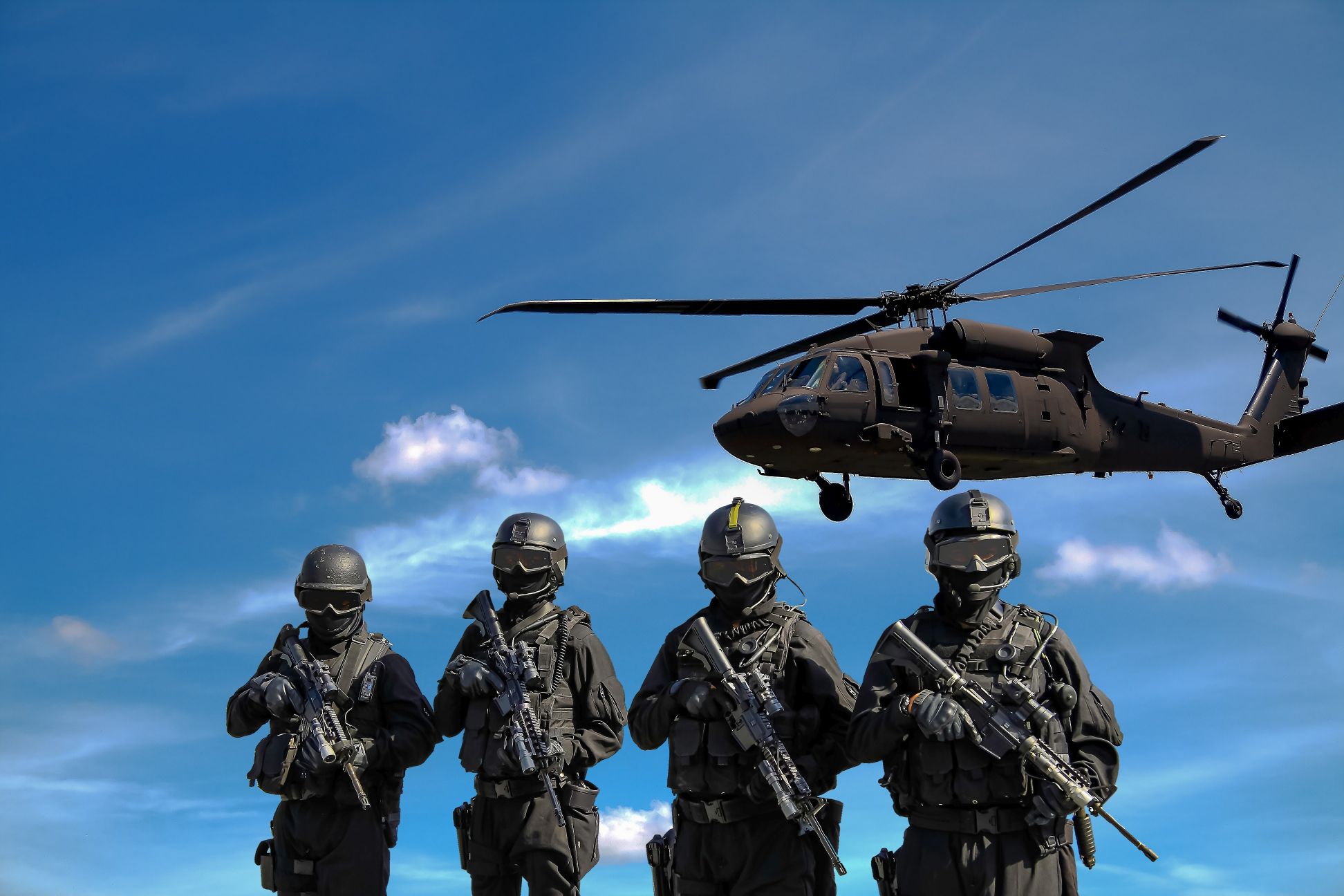The Virginia sun is beginning to rise. It’s 6 a.m. and the temperature is dropping. The upper layers of atmosphere are quickly blending with the lower areas, causing a drop in temperature. We are at an undisclosed location to train the black box operators within the Central Intelligence Agency (CIA). This unit has one sole mission — rescue a secret agent from danger anywhere in the world at any moment. Think of it as the James Bond quick rescue force.
The students come strolling in, some alone and some in groups, to gather before their 7 a.m. training brief. Look around and you would think there would be a lot of military special forces operators, and though there are a few, most of the group come straight from the civilian world, are younger and a great many of them were found working in hospitals. Think of a dynamic personality, with a process intellect, able to blend in and to execute under stress — the “gray man” who blends in ambiguously.
My role is teaching a Lone Operator Course, skills that prepare these highly clandestine operators for the ability to function solo or as a group down range. Today the class will learn combat trauma, not like anything you have seen before. This is not your national registry, EMT, TCCC-licensed, sanctioned, safe medicine.
This is combat medicine, not with plastic dummies but with real life blood and a loss of life if not done correctly. This is where every thinker and shooter learns to be a healer. You see, in the bad business of gun fighting, the life you may save may be your very own. For those of us who have been in harm’s way, we understand the value of balancing self-reliance with teamwork.
You’re thinking, “But I’m in law enforcement, I didn’t sign up for this, I signed up for the gun, the uniform, the camaraderie … not this.”
The truth is, more than 1,500 people were killed during the Vietnam War due to blood loss from an arm or a leg — which was preventable. Let me say that again, 1,500 people did not come home because of a preventable injury. We hear repeatedly about each officer’s concern for coming back alive, making it home, and yet, how many officers obtain the knowledge, skills and put in the time to continue to keep self-aid and buddy aid ready? Today I will arm you with some options to save not only your life but someone else’s.
A disclaimer here, this is bottom-line information and not meant to be written in legalese, medical jargon, academia or any other terminology. This is audience specific for those brave men and women in the trenches who do not have time for politics.
A little anatomy and physiology — you have on average between 5 and 6 liters of blood in your body (the container). For a young, fit, healthy human with no disease (diabetes, cancer etc.), you can lose some blood and not see a great impact. It varies. This does not mean you want to lose blood. It simply means you can compensate better than those outside your demographic. Every red blood cell counts, and paramedics do not perform street transfusions.
A little on blood loss — where it is and whose blood it is can impact the narrative. Blood on a white hospital floor looks different than on the black top or on the grass. Whether it is day or night has its own flare. Whether it is behind body armor or clothes plays a part. Finally, is it your blood, your partner’s, an adult or a child? The psychogenic effect needs to be addressed as well. For right now, find the bleed and stop it AGGRESIVELY! Good plumbers locate and stop leaks. Be a good plumber.
A Little History Lesson
But wait, aggressively? What about the whole first do no harm? I was taught only as a last resort?
You understand that those who write medical books are doctors — highly educated, skilled, well-staffed and usually in a controlled medical environment. Now ask yourself, “How many doctors are in combat, dug in trenches, fighting positions or behind enemy lines?” None. Doctors don’t want to get shot or shoot back while treating patients. You know who does, and even enjoys it? Combat medics, and we don’t write books for medical school.
Wait, how is any of this going to help me?
Fact: It can take 120 seconds to bleed out from a major artery. That’s two minutes, not from when you show up but from when that person got shot, stabbed, in a high-speed vehicle chase etc.
Now you’re thinking, “Six litters, that’s not a lot of blood, and 120 seconds is not a lot of time.” YOU’RE RIGHT.
Now add to it. It’s night, you are adrenalized, your vision narrows, your heart is pounding, you’re breathing rapidly and a gun fight just ended — or so you think. You’re running out of ammo, backup is 15 minutes away and your partner is face down in the street in a pool of blood. Did you check your watch to see what time your partner got tagged? Nope, you were working. Stay vigilant, head up, gun up, get to your partner, find the leak and throw a tourniquet on it NOW!
How do you train for this? Simple. Keep a tourniquet in your vehicle and at a stop light throw it on your dominant arm and tighten it all the way before the light turns green. Train the way you fight.
But, but, but don’t tourniquets hurt? No, not all but, the dying process sure does.
When you go home, you teach every member of your family and if you don’t have a family, on Friday nights when your roommate stumbles in after a long night, ambush him and throw a tourniquet at him and remember, you have two mins.
Now you know, what, you know why, let’s dive in to how.
But which tourniquet should I purchase?
Great question. Now you’re thinking. Tourniquets are like guns. There are a ton of them. Buy a few of them, train with them all and pick the one you like. They come in different sizes, shapes and applications. Don’t be fooled by “name brands” and cost. An ace wrap can stop blood flow.
Never deploy with the very tourniquet with which you train. It could break when you needed it most. Deploy with a new one. Keep more than one tourniquet. You never know how bad it’s going to get.
A Short Talk On Myths
Tourniquets have existed since Antiquity. For my non-history buffs, that’s Ancient Greece. While Virginia was one of the first states to begin keeping tourniquets on ambulances, education and academia did not catch up until the late 1990s. Here’s why.
During the Civil War, gangrene was a major killer for troops in the field. Surgeons would apply a wooden tourniquet to stop bleeding prior to surgery and removal of the infected limb. This was so common that the phrase “tourniquets lead to amputation” began.
To put this in perspective, during the thousands of orthopedic surgeries done daily in this country, the surgeon will apply a pneumatic tourniquet to perform surgery. Literally thousands of tourniquets have been applied with no side effects.
What about compartment syndrome? My buddy who is a (doctor, nurse, medic, fill in the blank) told me tourniquets are bad.
Do you want to save lives or compare friends?
Application
Put the tourniquet all the way up!
NOT two inches above the wound — ALL THE WAY UP.
Tighten it until the bleeding stops.
How do I know if bleeding has stopped? Check for a pulse. They are either dead or the bleeding has stopped.
Leave access to the windless or tightening device on top (visible, accessible and never cover them). Communicate to everyone where the tourniquet is.
Lastly, tourniquets move, no matter how tight they are applied. I’ve had patients become conscious and try and remove them. Always REASSES tourniquets.
Tourniquets will save your life. Tourniquets will save your life. Tourniquets will save your life.
The C-130 was packed with gear and a four-man raven team, a security element whose role it is to protect the bird while it is parked on the runway. That high, pitched whine deafens everyone as the landing gear is lowered. The bird is rumbling as we drop from altitude and barrel toward the runway. We were briefed that it could be a hostile landing and be prepared to engage when we disembark.
The sound of gunfire can be heard in the distance along with explosions from mortars. The jungle can be quiet but it is never safe. The wheels slam on the ground and everything aboard the bird is tossed around. The pilot yells that it is a hot landing and to get your gear and get off fast. They are trained to get moving since they are a sitting duck.
As soon as the rear hatch drops, we bail ready to engage. A jeep rushes toward us, with the passenger waving and screaming. Threat level unknown. The jeep violently turns and the passenger is dragging a lifeless body. It is very common in foreign country that locals and indigenous “ask for help.”
You could see blood coming from the right arm of this barely conscious man. I immediately dropped my knee on the wound with all my weight, gear and weapons, well more 300 pounds of direct pressure. I begin talking to the man, “You’re going to be OK, I got you.” I start searching his body for any other life-threatening injuries.
“What happened?” I ask his buddy.
“We were attacked, hit with mortar and gunfire.” (He is excited speaking half English and half Spanish).
I cut the injured man’s clothes to expose any injuries. I slide the tourniquet up his arm and tighten it until the blood stops. The gunfire continues and is getting closer. We start cross loading and prepare to move. The bird has to be airborne in five minutes.
We set up a perimeter and wait.
Lessons Learned
While this was the first and would not be the last time I used a tourniquet, the lessons fit, whether it’s the concrete jungle of an urban environment or in the brush of a rural town.
– Have you tourniquets prepped and ready to deploy.
– Pain is personal. It’s not your injury. Do your job.
– Head on a swivel. Be aware of this 360 world.
– Head up.
– Keep moving.
– If there is one traumatic injury, it’s worse than you think.
– You cannot fix a problem if you do not find it
– You do not rise to the occasion. You default to your level of training.
– Hope is not a plan.
– All skill sets are perishable.
– Train harder than you fight.
– Reassess.
– Communicate, move and shoot.
You do not need a special class, a special brand or a certificate to learn to use a tourniquet. Self-aid and buddy-aid was designed in case the units did not have a medic or their medic died. I trained all my guys in all my skills just in case I went down. I carried an M-60, more ammo and more weapons and had my team carry most of my medical gear. Your ability to be a valuable member of your unit depends on your commitment to your unit, team, your partner and yourself. If you go down, you cannot be reliable.
Self-reliance is recognizing no one is coming to save you.
Everywhere your gun goes, so does your tourniquet.
Always be ready to use them both.





